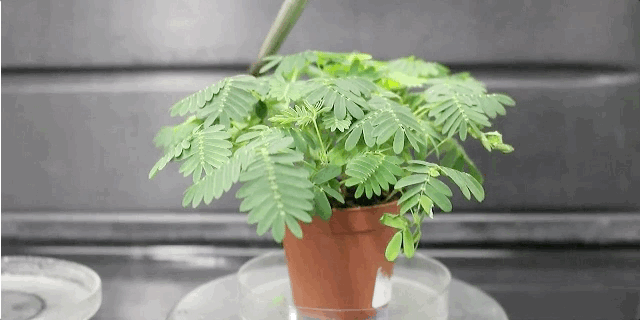When somebody mentions anaesthetics, we probably think straight away of pain relief, but there's a lot more going on in these complex chemical compounds than the simple negation of discomfort.
While there's a range of chemicals that can induce anaesthesia in humans, just how these unrelated compounds trigger a lack of consciousness remains somewhat unclear.
And the mystery deepens when you consider it isn't only animals that are affected by anaesthetics – plants are, too.
Humans in ancient societies were using things like herbs for various sedative purposes thousands of years ago, but the roots of modern anaesthesia began around the mid-19th century, when physicians began administering diethyl ether to patients during surgical procedures.
It was only a few decades later that scientists realised plants were similarly affected by ether, leading French physiologist Claude Bernard to conclude plants and animals shared a common biological essence that could be disrupted by anaesthetics.
 An unresponsive, anaesthetised sensitive plant (Yokawa et al.)
An unresponsive, anaesthetised sensitive plant (Yokawa et al.)
A century and a half later, scientists are still investigating this strange commonality – basically by slipping plants the mickey and seeing what it does to them.
In a new study by Japanese and European researchers, the team filmed a number of plants that exhibit the phenomenon of rapid plant movement to see what kinds of anaesthetic chemicals affected them.
The sensitive plant (Mimosa pudica) usually closes its leaves in response to touch stimuli; but when exposed to diethyl ether, the dosed-up plants completely lost this response, becoming motionless, with the movement response only returning to normal after 7 hours.
In a separate experiment with the sensitive plants, a lidocaine solution also immobilised the leaves.
Similarly, the Venus flytrap (Dionaea muscipula) lost its ability to close its trap when exposed to diethyl ether – despite repeated prongings by the researchers – but the mechanism recovered in just 15 minutes.
Another carnivorous plant, Cape sundew (Drosera capensis), captures prey via sticky tentacles on its leaves, but experiments showed they lost the ability to bend their leaves and tentacles when exposed to the ether.
As for why plants are incapacitated by these chemicals, the researchers hypothesise it is to do with the inhibition of action potentials, preventing electrical impulses that help plants' biological systems function.
"[B]ioelectricity and action potentials animate not only humans and animals but also plants," the researchers explain.
"That animals/humans and also plants are animated via action potentials is of great importance for our ultimate understanding of the elusive nature of plant movements and plant-specific cognition/intelligence based plant behaviour."
Ultimately, the team thinks these similarities between plant and animal reactions to anaesthetic compounds could lead to future research where plants might function as a substitute model or test system to explore human anaesthesia – something scientists are still pretty uncertain about.
It's not easy being green, perhaps, but at least they shouldn't feel any pain.
The findings are reported in Annals of Botany.
A version of this story was first published in December 2017.
